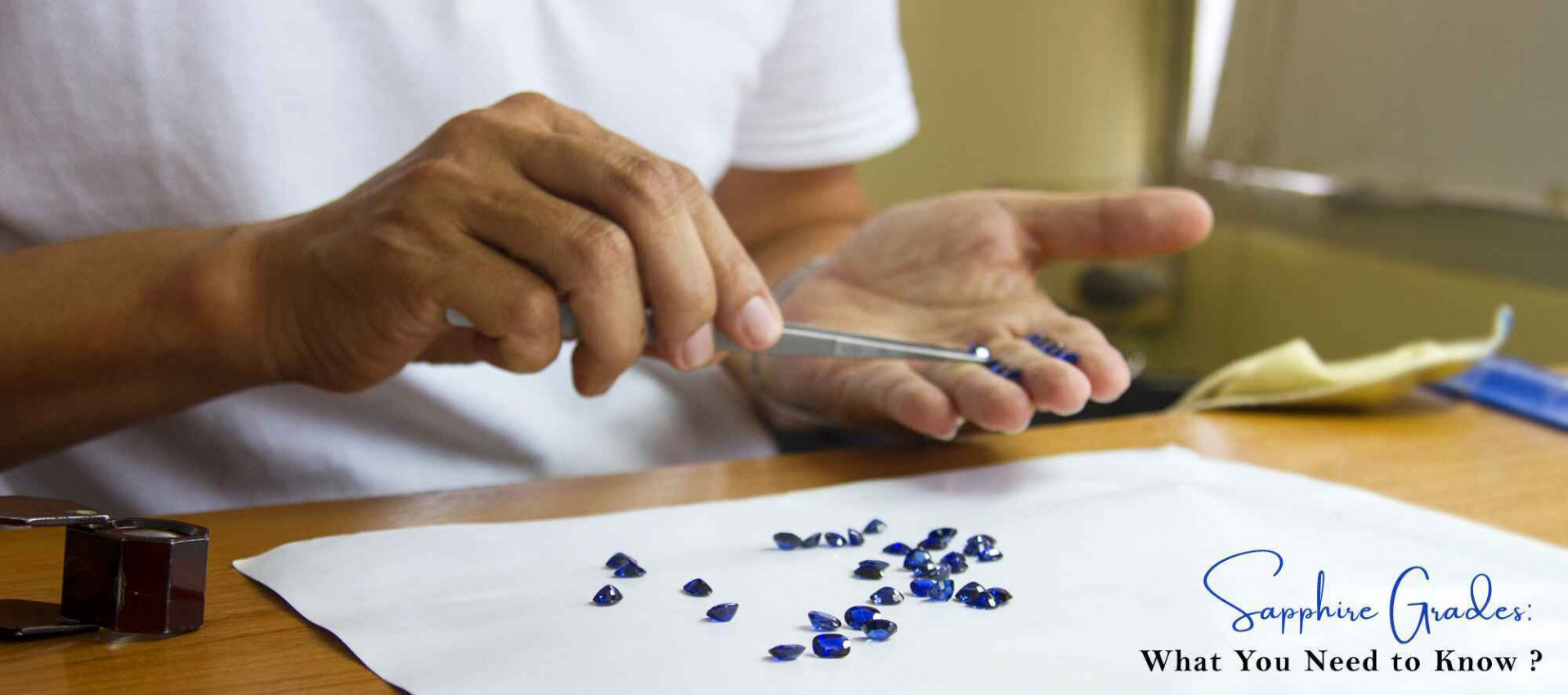 Categories
Categories 
Captivating. Beauty. Elegance. These are just a handful of the possible terms for sapphires. Sapphire is known as one of the four most popular precious stones is the -Sapphire.
There is a certain broad range of colors and quality available in sapphires. When you are choosing a good quality gemstone it's important to evaluate not only the stone's color, clarity, and cut, but also Sapphire grades and origin.
Let’s read more about Sapphire grades:

Natural sapphires are valued and graded based on a small set of classified parameters. The quality of a sapphire is based on its color, clarity, cut, and carat weight. When determining a sapphire's worth, the country of origin also plays a role. Many different uniform Sapphire-grade systems are used to determine the cost of jewelry. With a vast assortment, sapphires are classified and graded on the basis of precise ranks. The main criteria include AAA, AA, A, and B:
Sapphire color is the foremost aesthetic criterion to determine its quality. Sapphire grade according to color is the most essential factor to value. The renowned natural blue sapphire is available in rich, velvety, deep royal blue. This intense hue of sapphire is rarest and belongs to the most expensive variety available. While B-quality sapphires have a deep and opaque hue. Colors of sapphires include blue, pink, yellow, and padparadscha, which require grading to determine the appropriate hue, tone, and saturation for a given scene.

The purity of a gemstone is determined by its clarity after color. Because visible inclusions can reduce the quality of the gemstone. The sapphire grade is basically divided into three different clarity:
If you find a stone that is flawless, it is probably man-made. Cavities, silk, and concave are the most common types of inclusions. While visual inclusions can lower a gem's value, those that create a star effect (asterism) can increase its value.
Sapphires can have a variety of inclusions. Needles are the most predominant type of silk inclusion, which are long and thin with mineral deposits. The "star" effect is caused when interactions take place within silk inclusions in sapphire. If there are more inclusions in sapphire, this directly correlates to a decline in its value.
The term "cut" can be used to describe the proportion and polish of a sapphire. Poor cutting can lower the sapphire grade. This can lead to leakage of light, mostly in the case of shallow or deep-cut sapphires. The finest sapphire cutting leads to a shiny, bright look. The cuts, which are more difficult to achieve, result in a sapphire that is rare and hence more valuable. When dealing with sapphires, gem cutters prioritize the stone's color, its weight, and the reduced number of imperfections. When deciding on the optimal cut for a gemstone, experts take into account even its most complex characteristics, such as color zoning and pleochroism( different colors at different angles).

Sapphires are weighed in the same way as diamonds. The more carats a sapphire has, the higher will be its cost. It's a given that larger sapphires will cost more due to their heavier carat weight. A larger sapphire of the same quality will cost more than a smaller one of the same quality.
Blue, pink sapphire, and uncommon color sapphires with weigh more than or equal to 10 carats are always considered "important" due to their rarity, high cost, and uniqueness. It is considered an honor simply to be in the presence of exquisite sapphires.
Heat treatments are a popular sort of sapphire treatment, and they are used to get rid of impurities and enhance the color and saturation of the stone. Sapphire grade due to its color might change as a result of this treatment, going from one grade to another. Because heat treatment is so prevalent, that can have a slight effect on the value of a sapphire. The value can also be affected by various treatments.
Read More : How To Check If Blue Sapphire Suits You
From royals to aristocrats, there are historical references to sapphires, including the Greeks, Romans, and others. Sapphires were used significantly by these ancient cultures. These jewels were believed to have the power to unite them with their gods, harvest luck, and shield them from the enemy. Pakistan, Madagascar, India, China, Burmese, Ceylon Australia, and the United States are just a few of the countries where sapphires are mined. However, Sri Lanka and Kashmir are known for their elite sapphires.
Follow, all of these pointers to simplify and turn your journey delightful by classifying, selecting, and availing of your dreamy sapphire. For more details on this incredible gem, click here.




Anniversary Gifts By Year - Gemstones For 1st To 25th Anniversary
April 15th, 2025